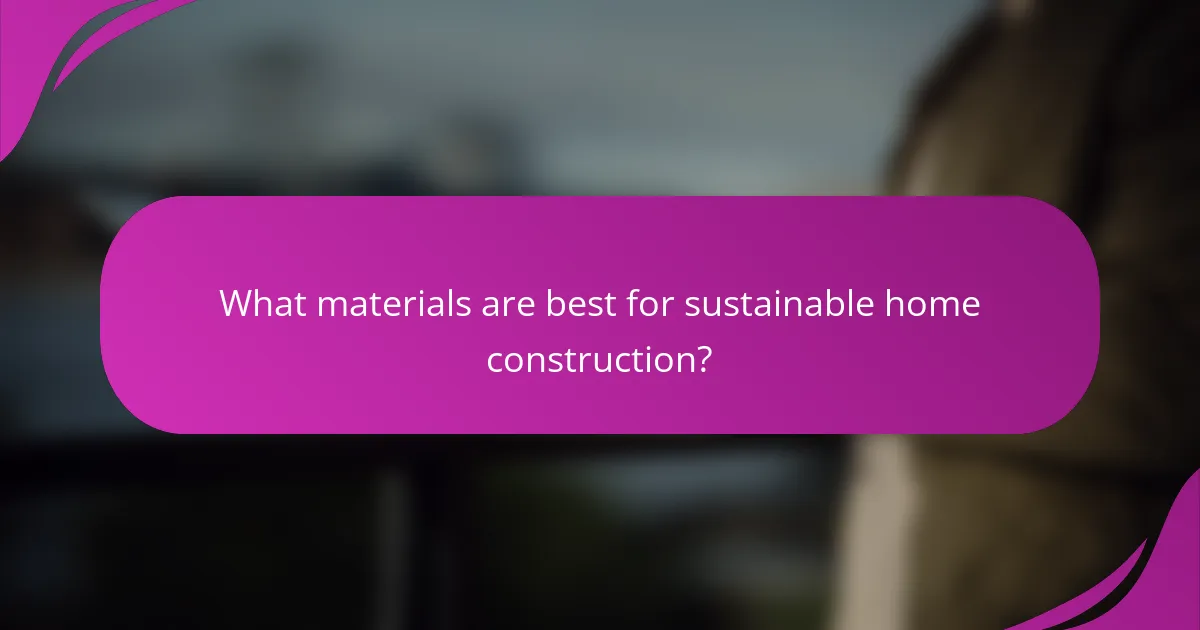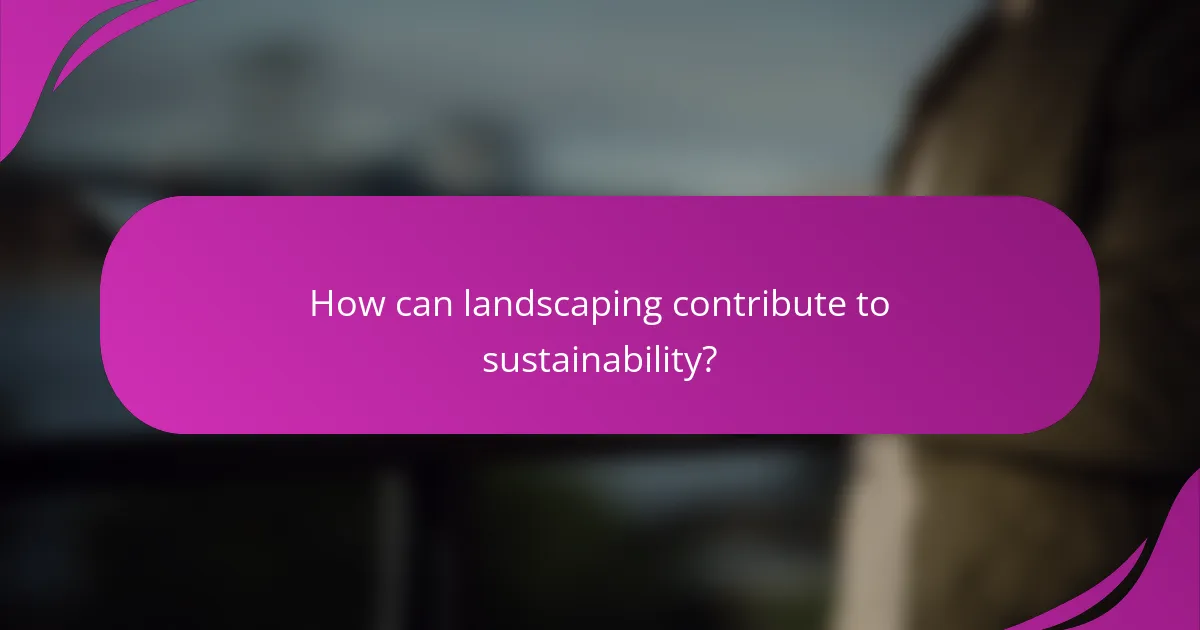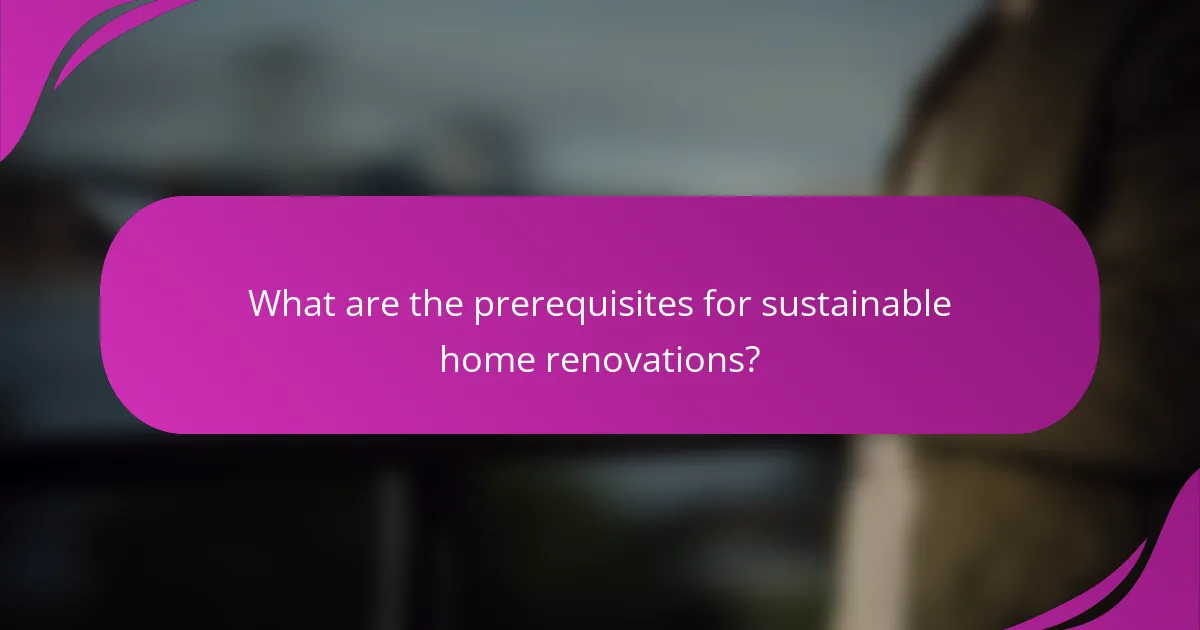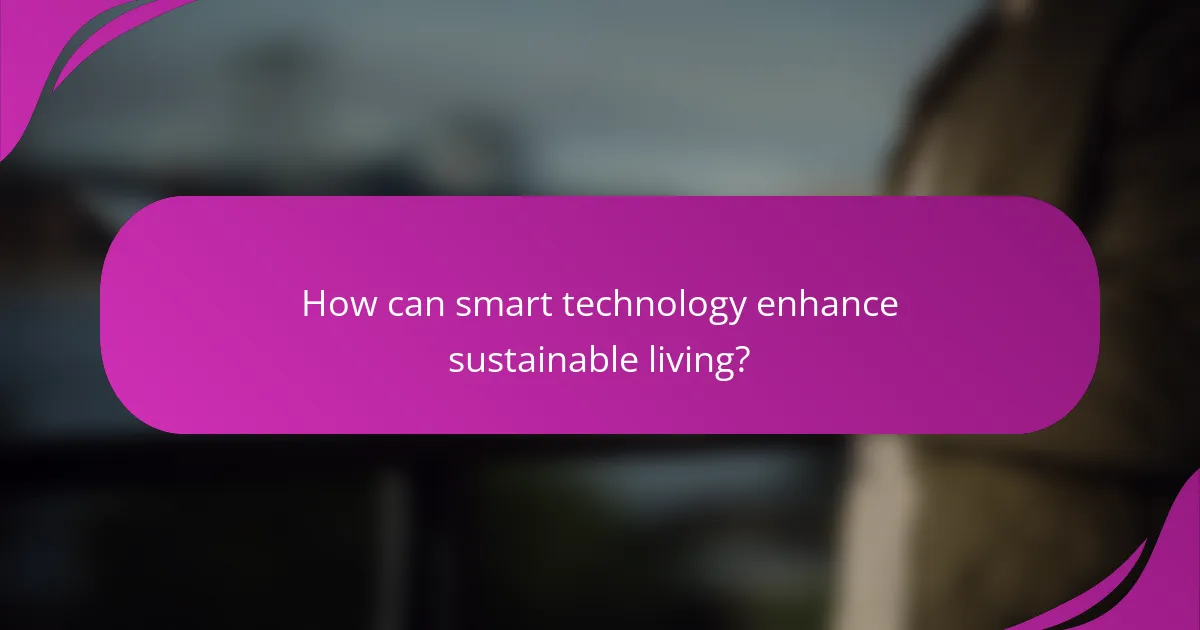Home design plays a crucial role in reducing carbon footprints and promoting sustainable living. By incorporating energy-efficient appliances, renewable energy sources, and eco-friendly materials, homeowners can create spaces that are not only environmentally responsible but also cost-effective. Embracing these practices leads to healthier living environments and significant long-term savings.

How can homeowners reduce their carbon footprint in Canada?
Homeowners in Canada can significantly reduce their carbon footprint by adopting sustainable practices and technologies. Key strategies include using energy-efficient appliances, installing solar panels, integrating smart home technology, upgrading insulation, and implementing water-saving fixtures.
Energy-efficient appliances
Energy-efficient appliances consume less electricity and water compared to standard models, leading to lower utility bills and reduced greenhouse gas emissions. Look for appliances with the ENERGY STAR label, which indicates they meet strict efficiency guidelines set by the government.
When replacing old appliances, consider those that use at least 10-50% less energy. Common examples include refrigerators, washing machines, and dishwashers. Regular maintenance can also enhance their efficiency and lifespan.
Solar panel installation
Installing solar panels allows homeowners to harness renewable energy, significantly cutting down on reliance on fossil fuels. In Canada, incentives such as rebates and tax credits can help offset installation costs, making solar energy more accessible.
Consider the orientation and shading of your roof when planning for solar panels. A well-placed system can reduce electricity bills by 30-50% or more, depending on local sunlight availability and energy consumption patterns.
Smart home technology
Smart home technology helps optimize energy usage by automating systems like heating, cooling, and lighting. Smart thermostats, for instance, can learn your schedule and adjust temperatures accordingly, potentially saving 10-20% on heating and cooling costs.
Investing in smart plugs and energy monitors can provide insights into energy consumption, allowing homeowners to identify and reduce waste. Ensure compatibility with existing systems to maximize benefits.
Insulation upgrades
Upgrading insulation is crucial for maintaining a comfortable home while minimizing energy use. Proper insulation reduces heat loss in winter and keeps homes cooler in summer, leading to lower heating and cooling demands.
Common insulation materials include fiberglass, foam board, and spray foam. Homeowners should focus on areas like attics, walls, and basements, where heat loss is most significant. A professional energy audit can help identify the best upgrade opportunities.
Water-saving fixtures
Water-saving fixtures, such as low-flow showerheads and faucets, can significantly reduce water consumption without sacrificing performance. These fixtures can cut water use by 20-60%, which is beneficial for both the environment and household bills.
In Canada, look for products certified by the WaterSense program, which ensures efficiency and performance. Regularly check for leaks in plumbing fixtures to prevent water waste and further reduce your carbon footprint.

What are the benefits of sustainable home design?
Sustainable home design offers numerous advantages, including reduced environmental impact, lower energy consumption, and enhanced quality of life. By prioritizing eco-friendly materials and energy-efficient systems, homeowners can enjoy long-term savings and healthier living spaces.
Lower utility bills
One of the primary benefits of sustainable home design is the reduction in utility bills. Energy-efficient appliances, proper insulation, and renewable energy sources such as solar panels can significantly decrease monthly expenses. Homeowners can often save anywhere from 20% to 50% on energy costs compared to traditional homes.
To maximize savings, consider implementing smart home technology that optimizes energy use. Programmable thermostats and energy monitoring systems can help track consumption and adjust settings accordingly, further lowering bills.
Improved indoor air quality
Sustainable home design enhances indoor air quality by utilizing non-toxic materials and ensuring proper ventilation. This leads to a healthier living environment, reducing allergens and pollutants that can cause respiratory issues. Features like low-VOC paints and natural building materials contribute to cleaner air.
Incorporating plants into your home can also improve air quality. Certain species, such as spider plants and peace lilies, naturally filter harmful substances, making your space healthier and more inviting.
Increased property value
Homes designed with sustainability in mind often see an increase in property value. As more buyers prioritize eco-friendly features, properties equipped with energy-efficient systems and sustainable materials can command higher prices. This trend is particularly evident in urban areas where green living is increasingly sought after.
Investing in sustainable upgrades, such as energy-efficient windows or solar energy systems, can yield a return on investment of 70% to 90% or more. Additionally, many regions offer tax incentives or rebates for green home improvements, further enhancing the financial benefits of sustainable design.

What materials are best for sustainable home construction?
For sustainable home construction, materials that minimize environmental impact and enhance energy efficiency are essential. Options like recycled steel, bamboo flooring, and low-VOC paints are popular choices that contribute to reducing a home’s carbon footprint.
Recycled steel
Recycled steel is an excellent choice for sustainable construction due to its durability and strength. It requires significantly less energy to produce compared to new steel, which helps lower greenhouse gas emissions. Additionally, using recycled steel can reduce waste in landfills, making it an eco-friendly option.
When considering recycled steel, look for suppliers who adhere to sustainability certifications. This ensures that the steel has been sourced responsibly and processed in an environmentally friendly manner. It’s also worth noting that recycled steel can be used in various applications, from structural frameworks to roofing materials.
Bamboo flooring
Bamboo flooring is a sustainable alternative to traditional hardwood due to its rapid growth and renewability. Bamboo can reach maturity in just three to five years, making it a highly renewable resource. It also has a high strength-to-weight ratio, making it a durable flooring option.
When selecting bamboo flooring, opt for products that are certified by organizations like the Forest Stewardship Council (FSC) to ensure responsible harvesting practices. Additionally, consider the finish of the bamboo; water-based finishes are typically lower in harmful chemicals compared to oil-based options.
Low-VOC paints
Low-VOC (volatile organic compounds) paints are crucial for maintaining indoor air quality while minimizing environmental impact. These paints release fewer harmful chemicals into the atmosphere, making them safer for both occupants and the environment. Choosing low-VOC options can significantly reduce the carbon footprint of your home.
When purchasing low-VOC paints, check for certifications such as Green Seal or the EPA’s Safer Choice label. These indicators help ensure that the products meet strict environmental standards. Additionally, plan for proper ventilation during and after application to further enhance indoor air quality.

How can landscaping contribute to sustainability?
Landscaping plays a crucial role in sustainability by enhancing biodiversity, reducing water usage, and minimizing carbon footprints. Thoughtful design choices can create eco-friendly outdoor spaces that support local ecosystems and conserve resources.
Xeriscaping techniques
Xeriscaping involves designing landscapes that require minimal irrigation, making it an effective way to conserve water. This technique often includes using drought-resistant plants, grouping plants with similar water needs, and utilizing mulch to retain soil moisture.
To implement xeriscaping, start by assessing your local climate and soil conditions. Consider incorporating native plants that thrive in your area, as they typically require less water and maintenance. A well-planned xeriscape can reduce outdoor water use by up to 50% compared to traditional landscaping.
Native plant selection
Choosing native plants for landscaping supports local wildlife and reduces the need for chemical fertilizers and pesticides. Native species are adapted to the local environment, making them more resilient to pests and diseases.
When selecting native plants, research species that are well-suited to your region’s climate and soil. For example, in the United States, plants like coneflowers and black-eyed Susans are popular choices. Incorporating these plants can enhance biodiversity and create a more sustainable garden.
Rainwater harvesting systems
Rainwater harvesting systems collect and store rainwater for later use, significantly reducing reliance on municipal water supplies. These systems can be as simple as rain barrels or as complex as underground cisterns, depending on your needs and budget.
To set up a rainwater harvesting system, install gutters and downspouts that direct water into storage containers. Ensure that the system complies with local regulations, as some areas have specific guidelines for rainwater collection. Utilizing harvested rainwater for irrigation can lower water bills and promote sustainable landscaping practices.

What are the prerequisites for sustainable home renovations?
Sustainable home renovations require careful planning and consideration of various factors, including energy efficiency, local regulations, and environmental impact. Key prerequisites involve conducting energy audits and understanding local building codes to ensure compliance and effectiveness in reducing the carbon footprint.
Energy audits
Energy audits are essential for identifying areas where your home can improve energy efficiency. A professional audit typically assesses insulation, heating and cooling systems, and appliances to pinpoint energy losses. Homeowners should consider scheduling an audit before renovations to prioritize upgrades that yield the most significant savings.
During an energy audit, you may receive recommendations such as sealing air leaks, upgrading to energy-efficient windows, or improving insulation. Implementing these suggestions can lead to reduced energy bills and a smaller carbon footprint. Aim for audits that follow recognized standards, such as those set by the U.S. Department of Energy or local energy efficiency programs.
Local building codes
Understanding local building codes is crucial for any renovation project. These codes dictate the standards for construction, safety, and environmental impact, ensuring that your renovations comply with legal requirements. Familiarize yourself with your area’s regulations, which can vary significantly across regions.
Before starting renovations, check with your local building authority to determine necessary permits and inspections. Non-compliance can lead to fines or the need to redo work. Additionally, some regions offer incentives for sustainable practices, such as tax credits for energy-efficient upgrades, which can offset renovation costs.

How can smart technology enhance sustainable living?
Smart technology can significantly enhance sustainable living by optimizing energy use, reducing waste, and improving resource management. By integrating smart devices and systems, homeowners can monitor and control their energy consumption more efficiently, leading to a smaller carbon footprint.
Energy Management Systems
Energy management systems (EMS) allow homeowners to track and control their energy usage in real-time. These systems can automate heating, cooling, and lighting based on occupancy and preferences, which can lead to energy savings of around 10-30%. For instance, smart thermostats learn user habits and adjust temperatures accordingly, reducing unnecessary energy consumption.
Smart Appliances
Smart appliances, such as refrigerators, washing machines, and dishwashers, are designed to use less energy and water compared to traditional models. Many smart appliances can be programmed to run during off-peak hours when energy costs are lower, further enhancing savings. Look for Energy Star-rated devices to ensure efficiency and sustainability.
Water Conservation Technologies
Technologies like smart irrigation systems and low-flow fixtures help conserve water in homes. Smart irrigation systems can adjust watering schedules based on weather conditions, reducing water waste by up to 50%. Additionally, low-flow faucets and showerheads can significantly decrease water usage without sacrificing performance.
Home Automation for Sustainability
Home automation systems integrate various smart devices to create a cohesive approach to energy efficiency. For example, automated lighting can turn off when rooms are unoccupied, and smart blinds can adjust based on sunlight, reducing heating and cooling demands. This interconnectedness allows for a more sustainable lifestyle with minimal effort.
Monitoring and Feedback Tools
Monitoring tools provide feedback on energy and water usage, helping homeowners identify areas for improvement. Smart meters and energy dashboards can display real-time data, enabling users to make informed decisions about their consumption habits. Regularly reviewing this information can lead to behavioral changes that promote sustainability.


